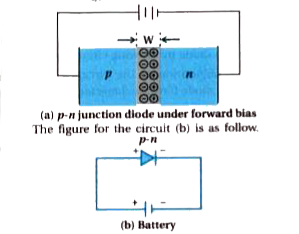Text Solution
Verified by Experts
|
Topper's Solved these Questions
SEMICONDUCTOR ELECTRONICS : MATERIALS, DEVICES AND SIMPLE CIRCUITS
KUMAR PRAKASHAN|Exercise Section-B : Numericals (Numerical From Textual illustrations)|16 VideosView PlaylistSEMICONDUCTOR ELECTRONICS : MATERIALS, DEVICES AND SIMPLE CIRCUITS
KUMAR PRAKASHAN|Exercise Section-B : Numericals (Numerical From Textual Exercise)|15 VideosView PlaylistSEMICONDUCTOR ELECTRONICS : MATERIALS, DEVICES AND SIMPLE CIRCUITS
KUMAR PRAKASHAN|Exercise Section-D : Multiple Choice Questions (MCQs) (MCQs asked in Competitive Exams)|129 VideosView PlaylistSAMPLE QUESTION PAPER
KUMAR PRAKASHAN|Exercise PART-B SECTION-C|5 VideosView PlaylistWAVE OPTICS
KUMAR PRAKASHAN|Exercise SECTION-D (MULTIPLCE CHOICE QUESTIONS (MCQS)) (MCQS FROM DARPAN BASED ON TEXTBOOK)|239 VideosView Playlist
Similar Questions
Explore conceptually related problems
Knowledge Check
A
B
C
D
Submit
A
B
C
D
Submit
A
B
C
D
Submit
Similar Questions
Explore conceptually related problems
KUMAR PRAKASHAN-SEMICONDUCTOR ELECTRONICS : MATERIALS, DEVICES AND SIMPLE CIRCUITS -Section-A : Questions - Answers
- Write short on semiconductor diode.
04:26
|
Play - State the methods of connection of p-n junction.
01:05
|
Play - What is forward bias and reverse bias ?
07:26
|
Playing Now - When is the p-n junction called reverse bias and explain the change in...
05:38
|
Play - What is static characteristic of p-n junction and write its types.
02:09
|
Play - Explain the forward characteristics of the p-n junction diode by drawi...
06:20
|
Play - Explain the reverse characteristics of p-n junction diode by circuit d...
06:14
|
Play - What is rectification and rectifier ? Why p-n junction diode is used a...
04:31
|
Play - Write the principle of rectifier.
01:17
|
Play - Explain the use of the junction diode as a half wave rectifier by draw...
06:29
|
Play - Explain the use of junction diode as a full wave rectifier by drawing ...
06:56
|
Play - Describe the simple filter circuit for obtaining smooth rectified volt...
05:57
|
Play - Write short note on zener diode.
01:25
|
Play - Explain the use of Zener diode as a voltage regulator.
04:05
|
Play - What are optoelectronic devices? Give the names of such major devices.
04:52
|
Play - Explain construction and working of photodiode.
08:09
|
Play - Explain the design, working, uses and benefits of light emitting diode...
07:14
|
Play - Describe construction, working and use of the solar cell.
11:04
|
Play - What are the ideal materials for fabrication of solar cell? and give t...
01:26
|
Play - What is digital signal ? What mathematical method are expressed in it?
03:09
|
Play

